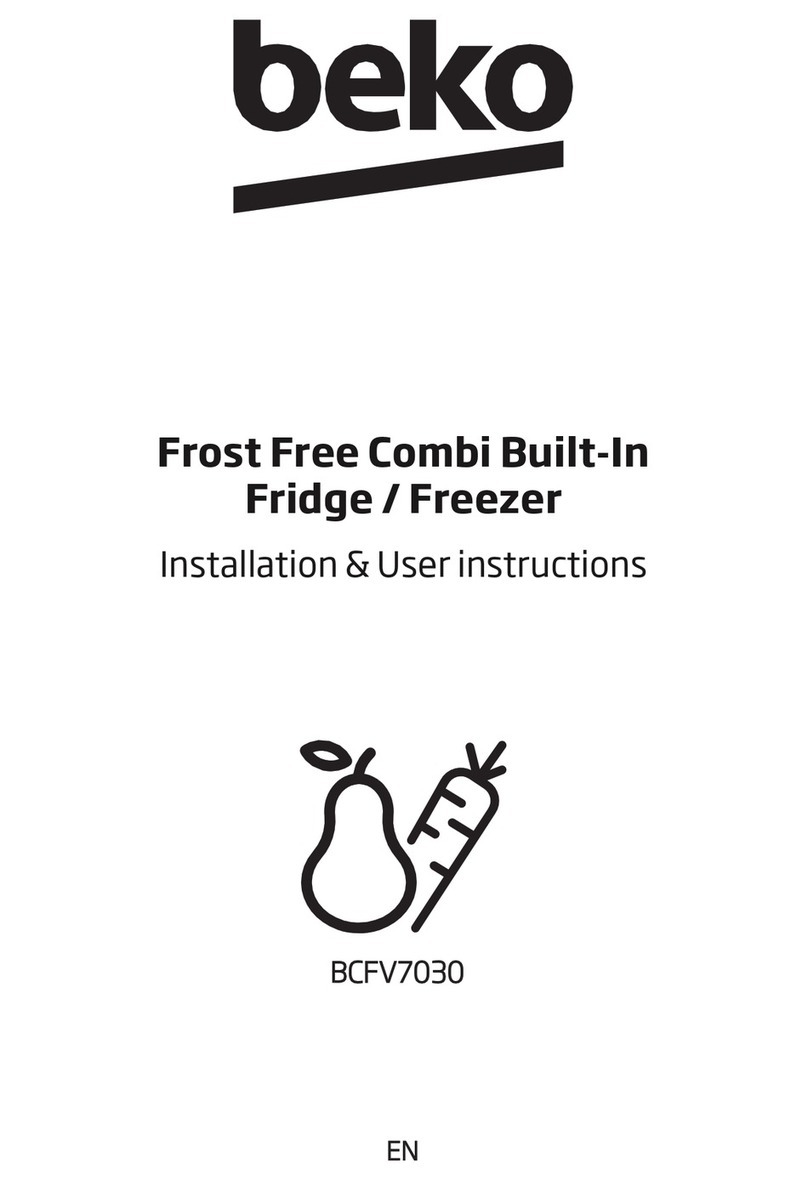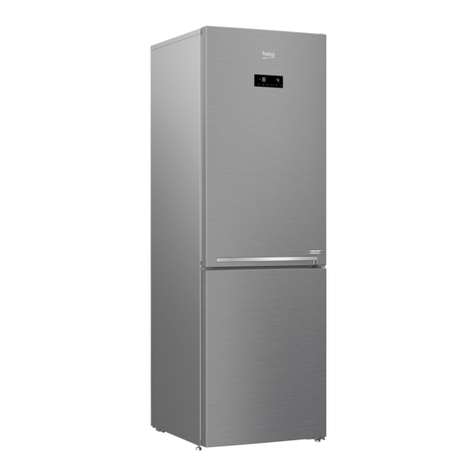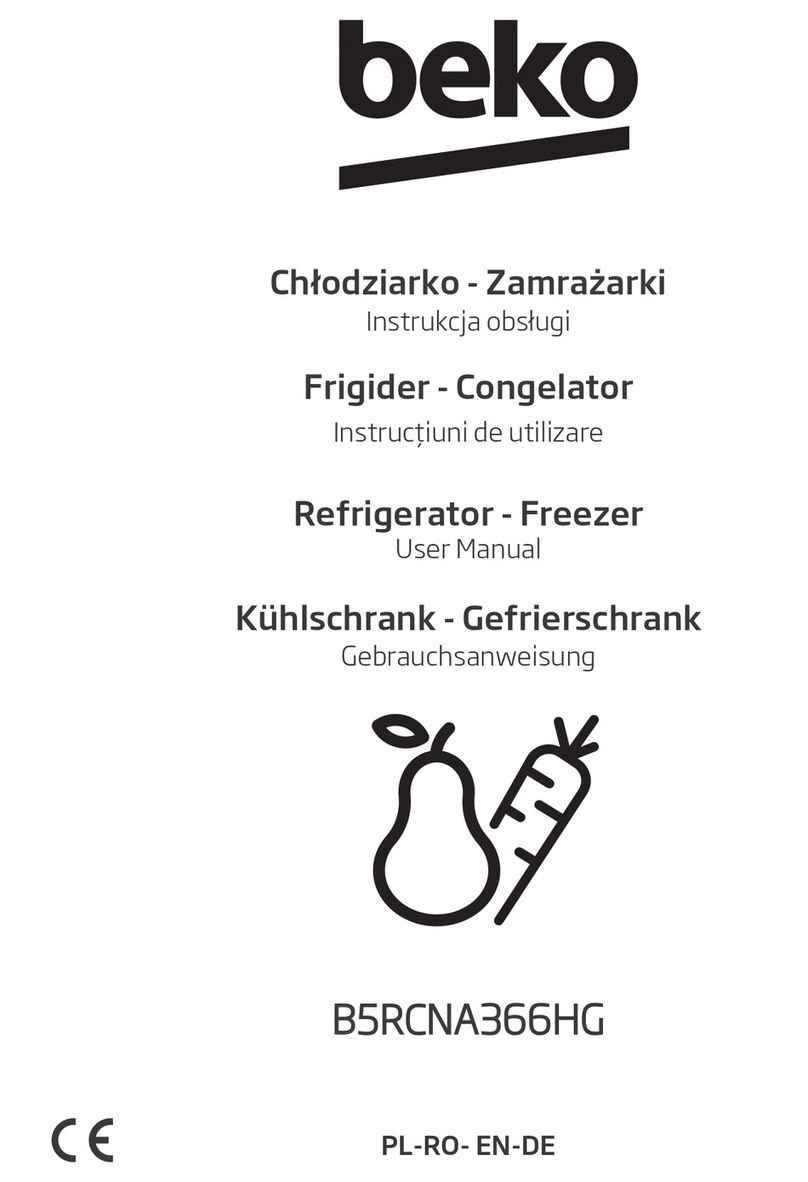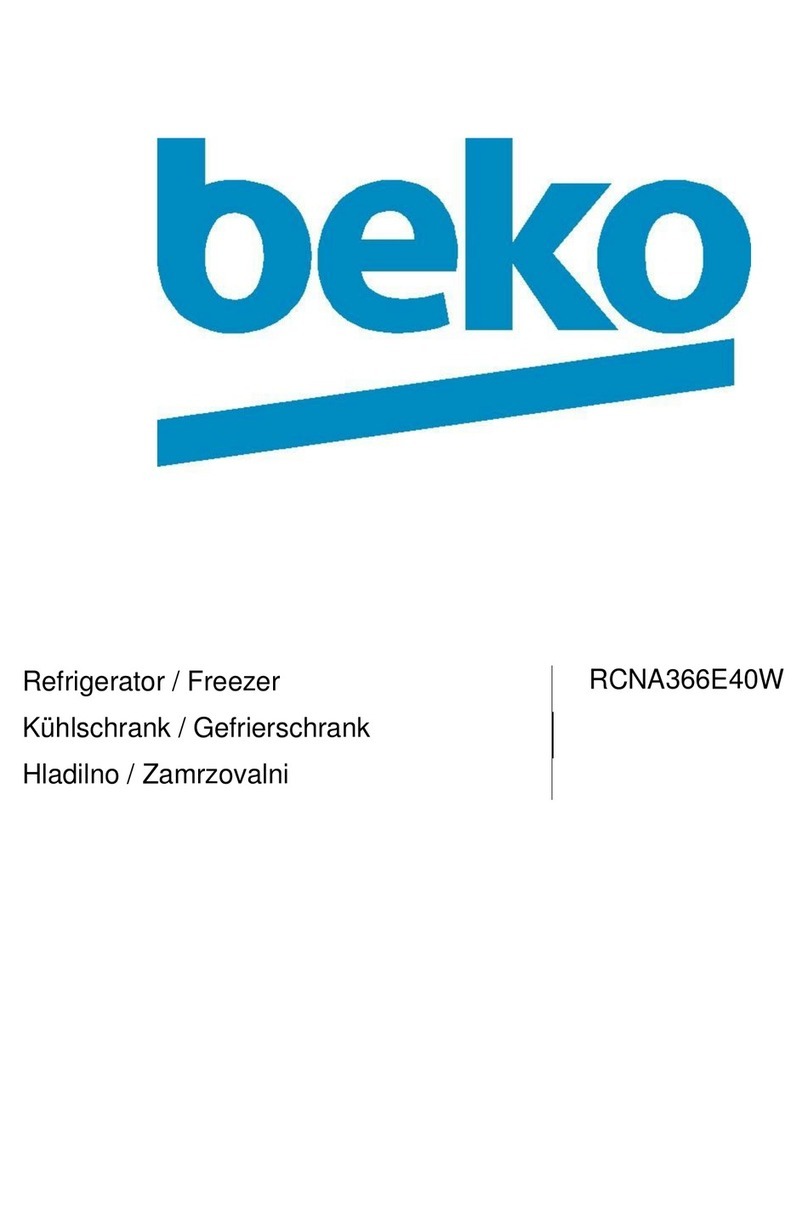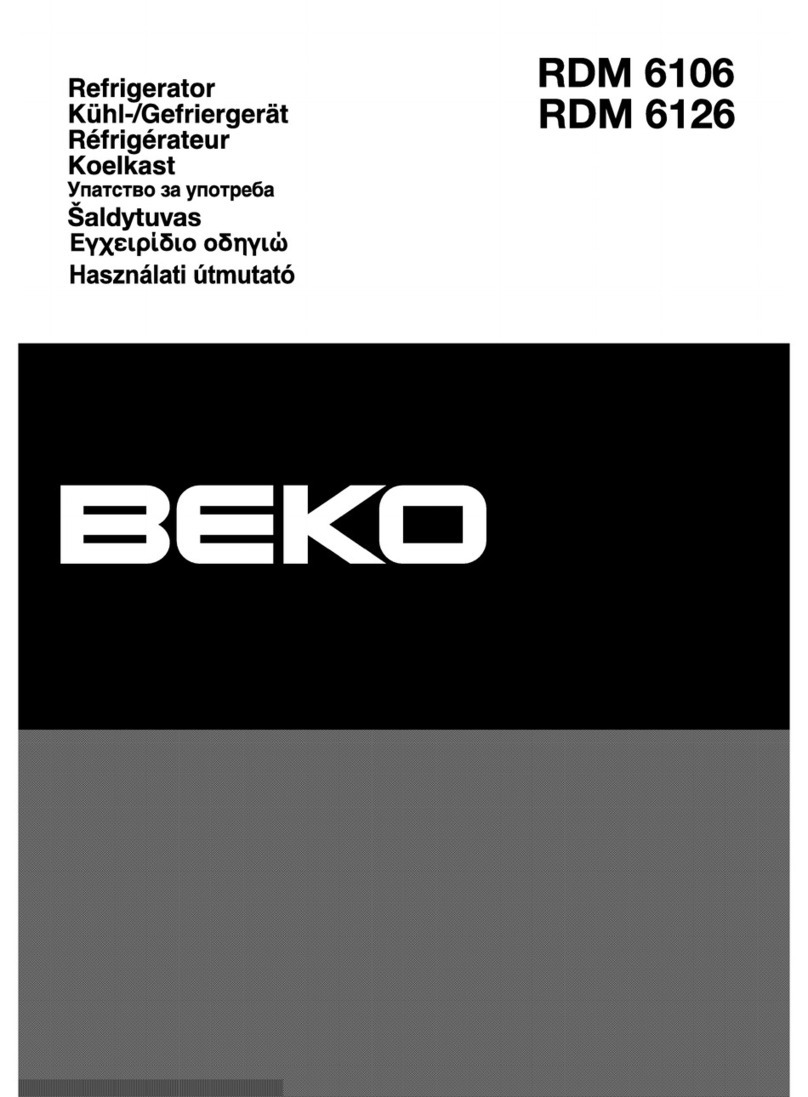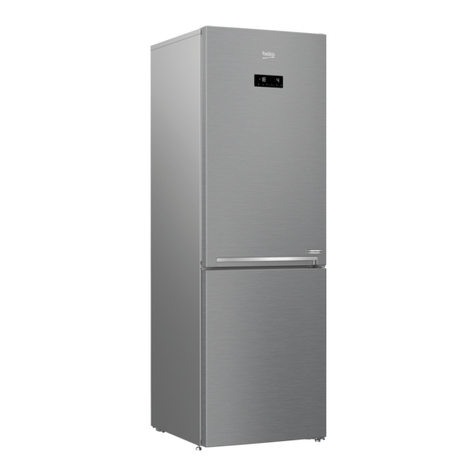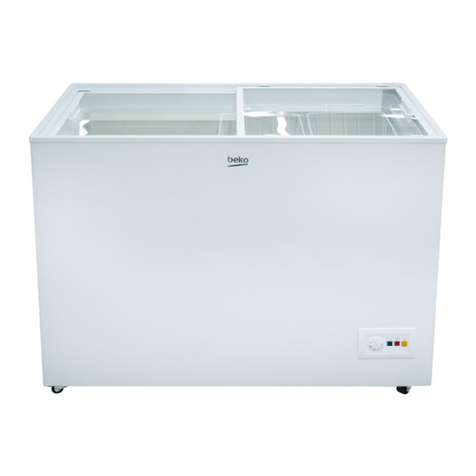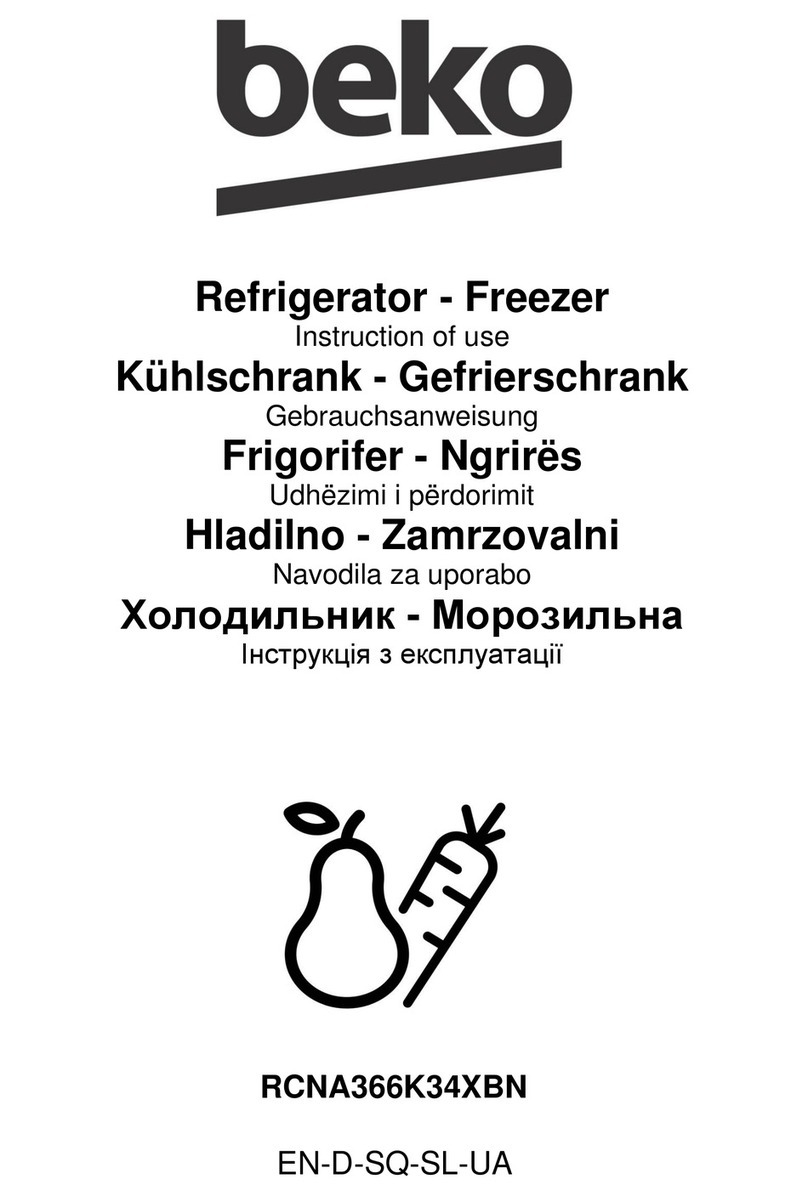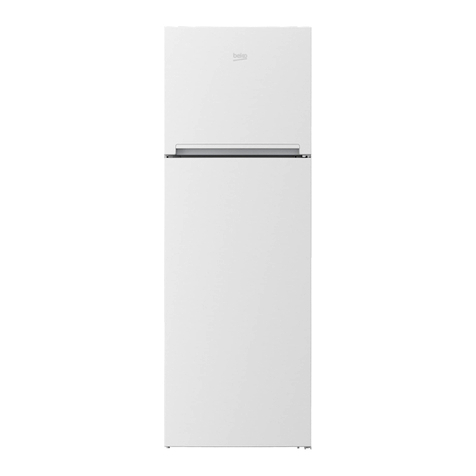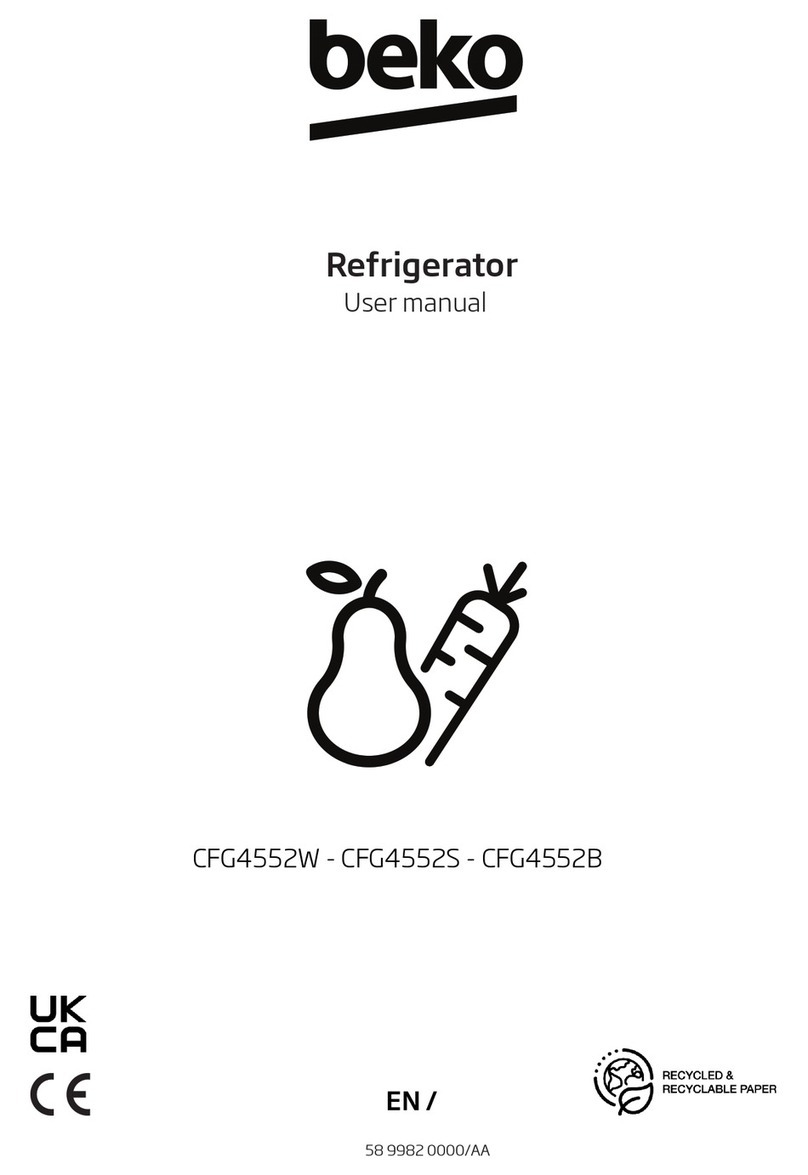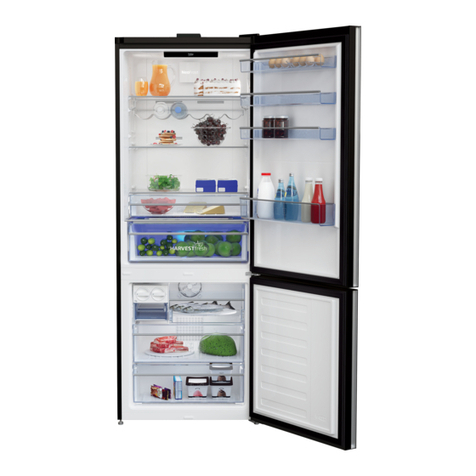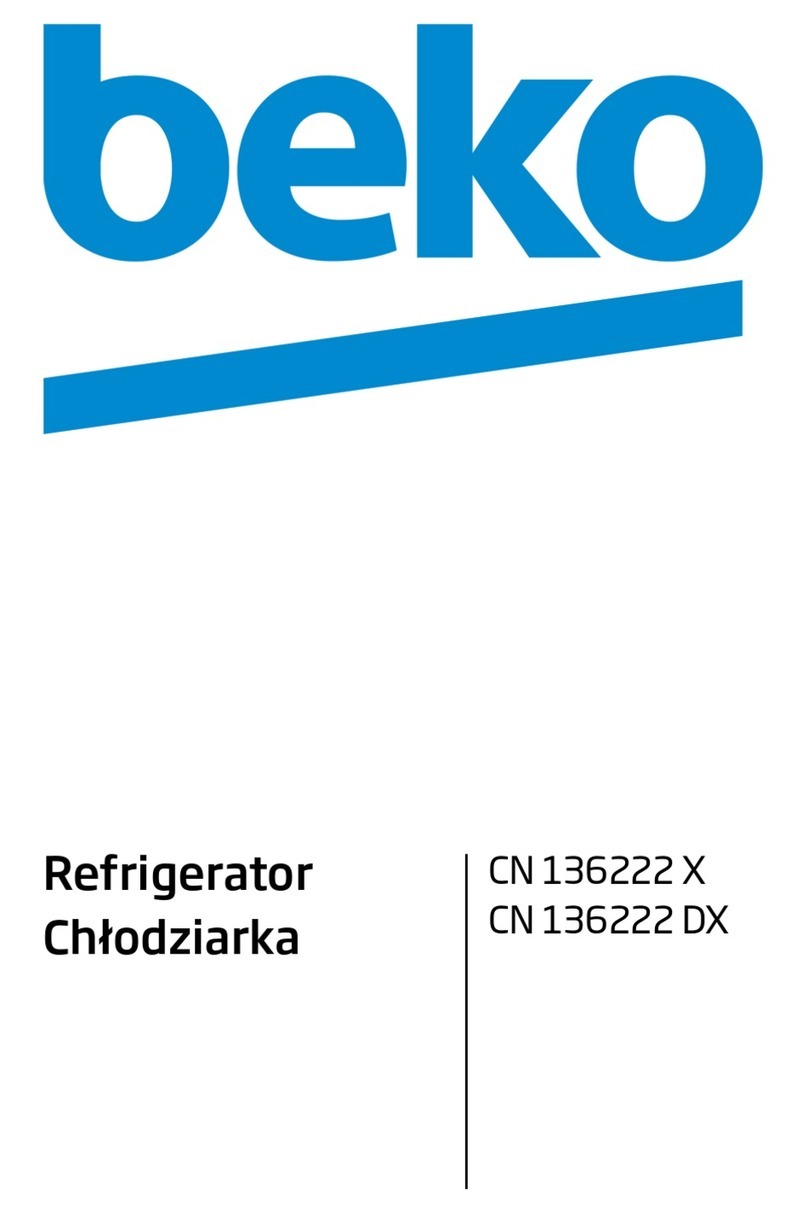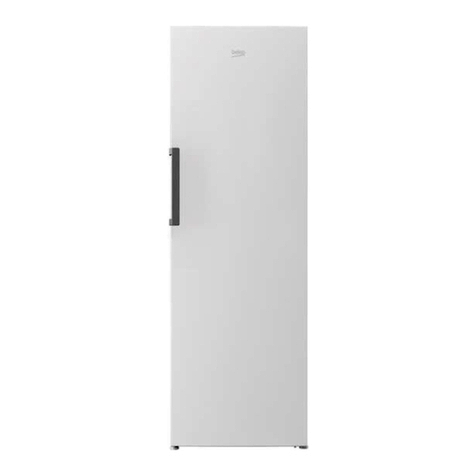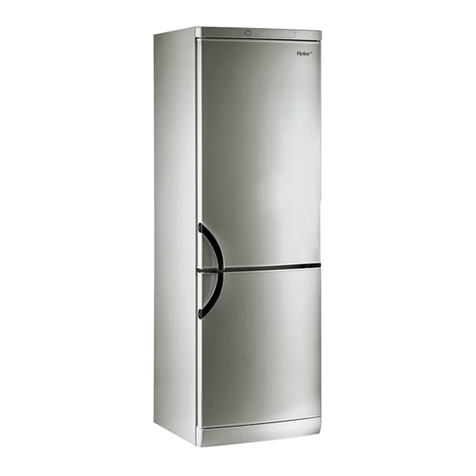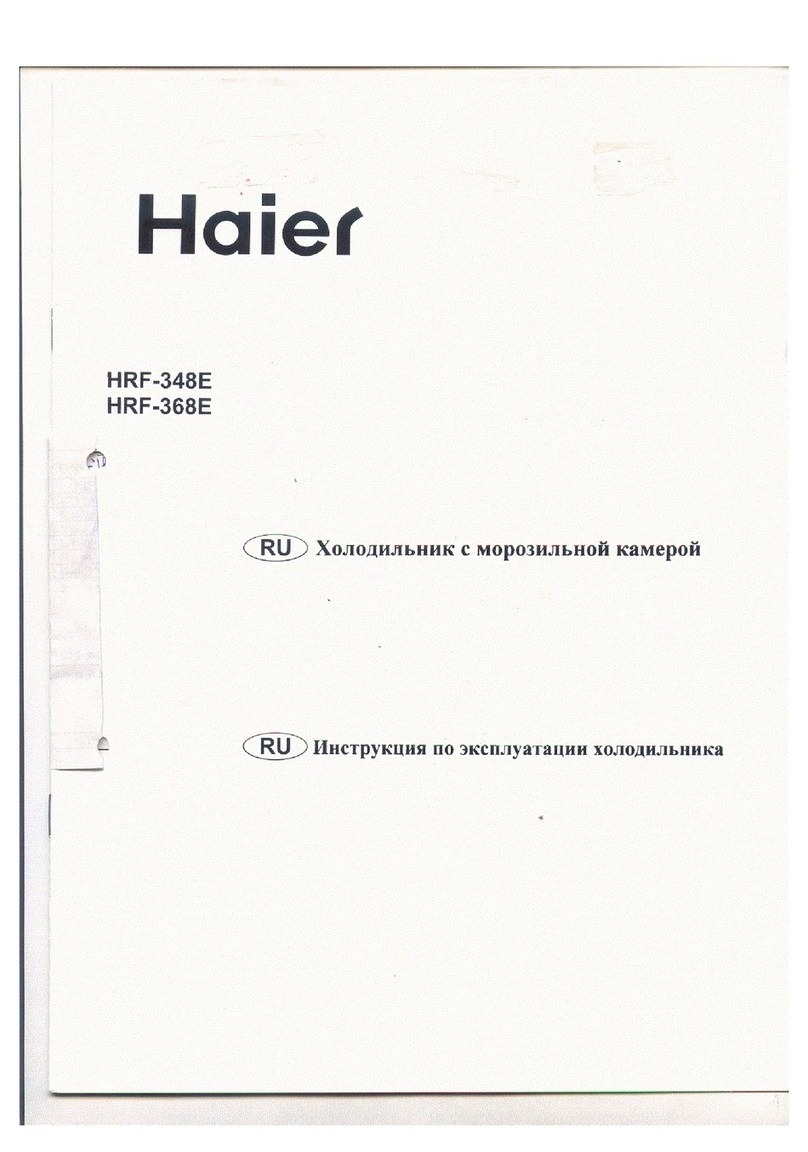
5 / 22 EN
Refrigerator/User Manual
Safety and envronment nstructons
(electrical card box cover) (1)
is open.
1
1
• Do not use steam or steamed
cleaning materials for cleaning
the refrigerator and melting
the ice inside. Steam may
contact the electrified areas
and cause short circuit or
electric shock!
• Do not wash the product by
spraying or pouring water on
it! Danger of electric shock!
• In case of malfunction, do
not use the product, as it may
cause electric shock. Contact
the authorised service before
doing anything.
• Plug the product into an
earthed socket. Earthing
must be done by a qualified
electrician.
• If the product has LED
type lighting, contact the
authorised service for
replacing or in case of any
problem.
• Do not touch frozen food with
wet hands! It may adhere to
your hands!
• Do not place liquids in bottles
and cans into the freezer
compartment. They may
explode.
• Place liquids in upright
position after tightly closing
the lid.
• Do not spray flammable
substances near the product,
as it may burn or explode.
• Do not keep flammable
materials and products with
flammable gas (sprays, etc.) in
the refrigerator.
• Do not place containers
holding liquids on top of the
product. Splashing water on
an electrified part may cause
electric shock and risk of fire.
• Exposing the product to rain,
snow, sunlight and wind will
cause electrical danger. When
relocating the product, do
not pull by holding the door
handle. The handle may come
off.
• Take care to avoid trapping
any part of your hands or body
in any of the moving parts
inside the product.
• Do not step or lean on the
door, drawers and similar parts
of the refrigerator. This will
cause the product to fall down
and cause damage to the
parts.
• Take care not to trap the
power cable.


